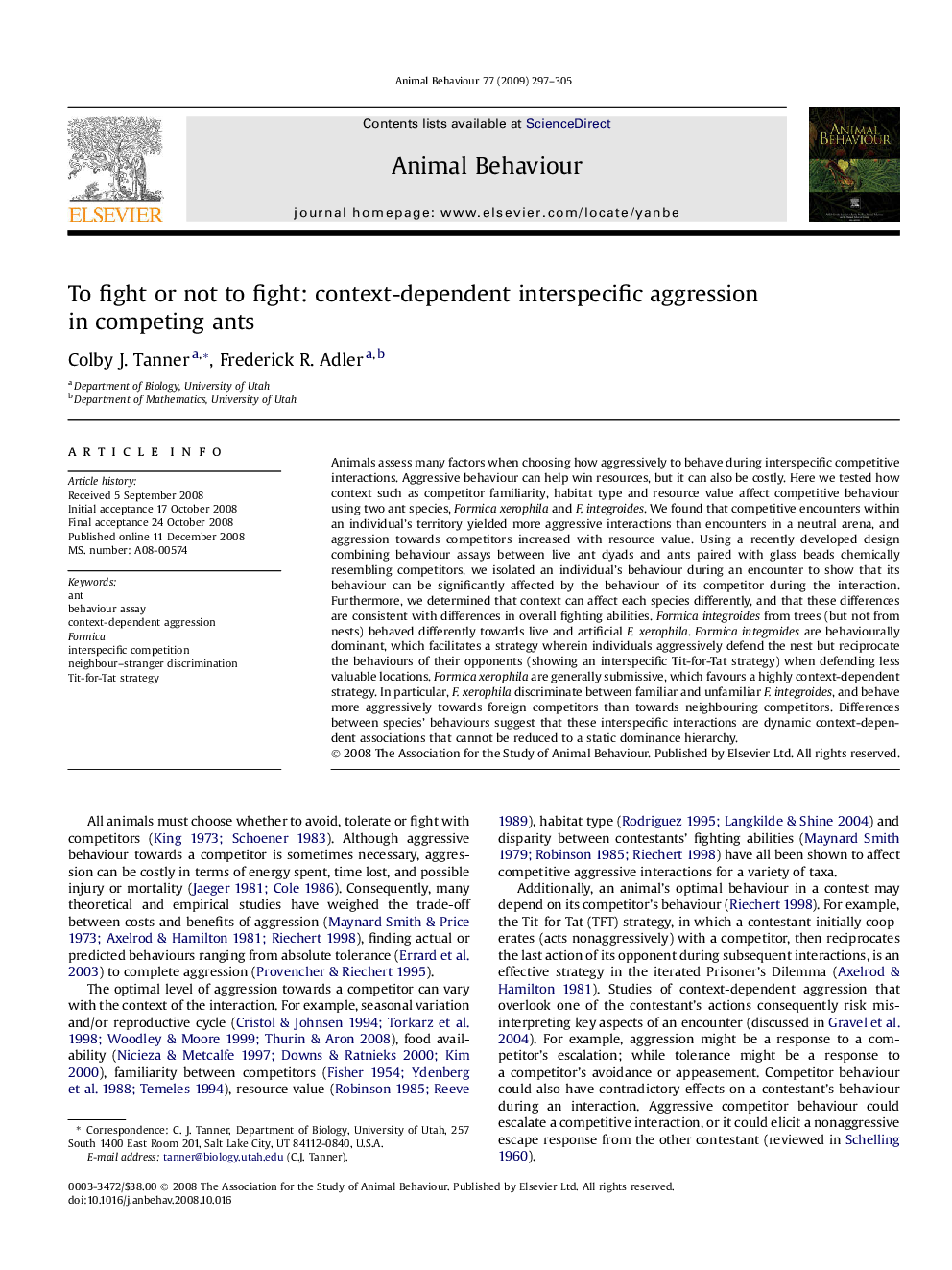| Article ID | Journal | Published Year | Pages | File Type |
|---|---|---|---|---|
| 2418150 | Animal Behaviour | 2009 | 9 Pages |
Animals assess many factors when choosing how aggressively to behave during interspecific competitive interactions. Aggressive behaviour can help win resources, but it can also be costly. Here we tested how context such as competitor familiarity, habitat type and resource value affect competitive behaviour using two ant species, Formica xerophila and F. integroides. We found that competitive encounters within an individual's territory yielded more aggressive interactions than encounters in a neutral arena, and aggression towards competitors increased with resource value. Using a recently developed design combining behaviour assays between live ant dyads and ants paired with glass beads chemically resembling competitors, we isolated an individual's behaviour during an encounter to show that its behaviour can be significantly affected by the behaviour of its competitor during the interaction. Furthermore, we determined that context can affect each species differently, and that these differences are consistent with differences in overall fighting abilities. Formica integroides from trees (but not from nests) behaved differently towards live and artificial F. xerophila. Formica integroides are behaviourally dominant, which facilitates a strategy wherein individuals aggressively defend the nest but reciprocate the behaviours of their opponents (showing an interspecific Tit-for-Tat strategy) when defending less valuable locations. Formica xerophila are generally submissive, which favours a highly context-dependent strategy. In particular, F. xerophila discriminate between familiar and unfamiliar F. integroides, and behave more aggressively towards foreign competitors than towards neighbouring competitors. Differences between species’ behaviours suggest that these interspecific interactions are dynamic context-dependent associations that cannot be reduced to a static dominance hierarchy.
